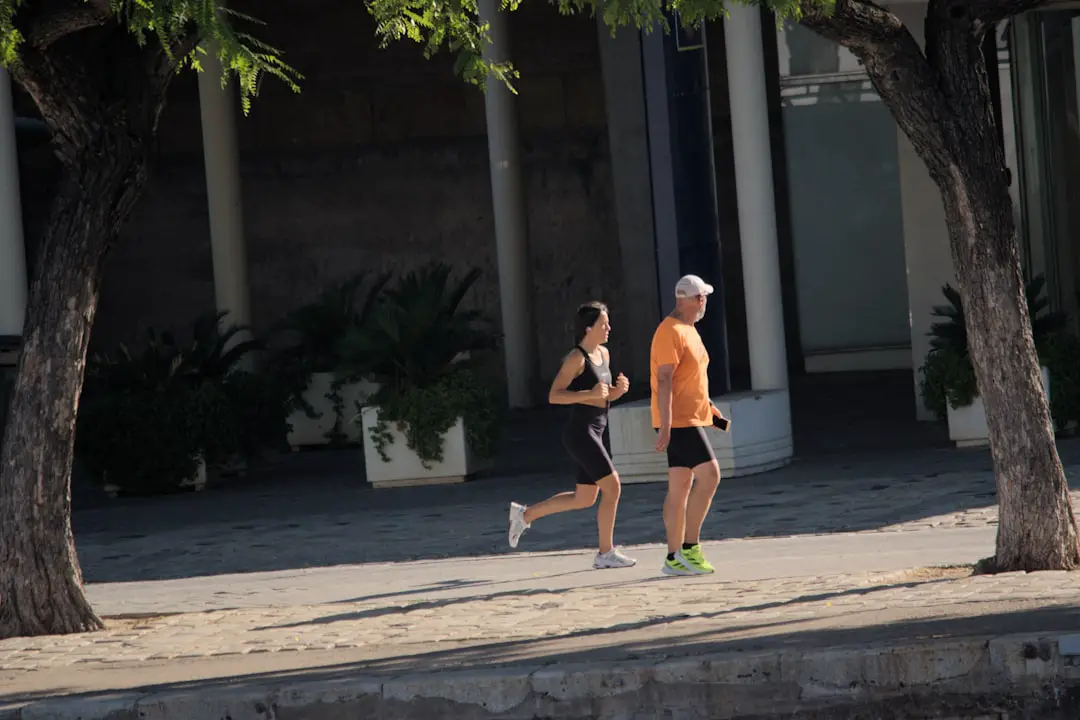Last fall, our team helped a local elementary school pull off its first-ever walkathon. The kids were pumped, the parents were caffeinated, and—true story—one kindergartner tried to register her pet goldfish as a walker. Chaos? Nope. Because we had crystal-clear rules in place, the event raised $18,000 in three hours and zero fish were harmed. Later in this guide, we’ll reveal the exact waiver clause that saved the day (and the goldfish). Ready to turn your next walk into a rule-abiding, record-smashing success? Let’s roll.
Key Takeaways
- 10 essential rules cover registration, safety, fundraising, and virtual options—steal our copy-paste template.
- Waivers + event insurance are non-negotiable; one slip can sink your budget.
- Fundraising minimums work best when framed as impact stories, not dollar demands.
- DoJiggy is our top pick for schools, Classy for large nonprofits, and Givebutter for grassroots campaigns.
👉 Shop the tools we trust:
Table of Contents
⚡️ Quick Tips and Facts
🕰️ From Pilgrimage to Pedometers: A Brief History of Walkathon Rules
🚦 Walkathon Rules and Regulations: The Backbone of a Successful Event
1. Registration & Eligibility Guidelines
2. Safety & Medical Clearance Protocols
3. Route & Distance Rules
4. Timing, Checkpoints & Bib Rules
5. Fundraising Minimums & Donation Regulations
6. Refund, Transfer & Deferral Policies
7. Code of Conduct & Disciplinary Actions
8. Spectator & Pet Policies
9. Weather Contingency & Force Majeure
10. Virtual Walkathon Rules
🛡️ Protecting Your Organization: Waivers, Insurance & Legal Must-Knows
💰 Minimum Donation Regulations: How Low Can You Go?
📱 Tech & Tools: DoJiggy vs. Classy vs. Givebutter—Which Platform Enforces Rules Best?
🏆 7 Proven Ways to Raise Funds Faster (Without Breaking the Rules)
🤔 What Are the Benefits of a Walkathon?
🧩 Common Rule-Breaking Scenarios & How to Handle Them Like a Pro
📝 Sample Walkathon Rules Template (Copy-Paste Ready!)
🎉 Conclusion
🔗 Recommended Links
❓ FAQ
📚 Reference Links
Here at Walkathon Benefits™, we’ve seen it all. The triumphs, the tears, and the occasional toddler-led detour that accidentally shortens the 5K to a 500-meter dash. We’re a team of health pros, event planners, and fundraising fanatics who live and breathe walkathons. And let us tell you, the secret sauce to a flawless, fun, and fund-filled event isn’t just the enthusiasm—it’s the rules. A solid set of walkathon rules and regulations is the unsung hero that keeps everyone safe, happy, and heading in the right direction.
Ready to transform your event from a chaotic stroll into a well-oiled fundraising machine? Let’s walk through everything you need to know.
⚡️ Quick Tips and Facts
Pressed for time? Here’s the low-down on walkathon rules. Think of this as your pre-walk stretch for your brain.
- Safety First, Always: Your number one priority. This means a clearly marked route, first-aid stations, and a solid communication plan.
- Waivers are Non-Negotiable: A signed liability waiver from every single participant (or their guardian) is your best legal friend. 🛡️
- Clarity is Kindness: Vague rules lead to confusion. Be explicit about registration, fundraising minimums, start times, and what’s allowed on the course (strollers ✅, scooters ❌).
- Typical Distance: Most charity walkathons are between 3K and 5K (1.8 to 3.1 miles), making them accessible to a wide range of fitness levels.
- Fundraising is the Goal: While walking is the activity, fundraising is the purpose. Clear rules on how to collect and submit donations are crucial for unlocking your walkathon’s profit margins.
- Permits, Permits, Permits: Walking on public streets or in parks? You’ll likely need a permit from your local municipality. Check with your city or county parks department weeks in advance.
- Virtual is the New Reality: Have a set of rules specifically for virtual participants. How do they track miles? When are donations due?
- Communicate… Then Over-Communicate: Email your rules, post them on your website, have them on signs at the event. You can’t share them enough!
🕰️ From Pilgrimage to Pedometers: A Brief History of Walkathon Rules

Ever wonder where this whole “walking for a cause” thing came from? It’s not a new concept. For centuries, people have undertaken long walks, or pilgrimages, for spiritual reasons. But the modern walkathon, a structured event for fundraising, has its roots in the 20th century.
One of the earliest large-scale events was the UK’s Aldermaston Marches in the late 1950s, protesting nuclear weapons. These were more political marches than fundraisers, but they established the model: a large group of people walking a set route to draw attention to a cause.
The fundraising-focused “walk-a-thon” as we know it truly took off in the late 1960s and 1970s. Organizations like the March of Dimes popularized the pledge-per-mile model, turning a simple walk into a powerful fundraising tool.
So, what’s changed? In the early days, the “rules” were simple: show up, walk, and collect your pledges. Today, in a more litigious and complex world, the rulebook has gotten a lot thicker. We’ve gone from handshake agreements to digital waivers, from simple cash collections to sophisticated online fundraising platforms. The evolution of these rules reflects the growth of walkathons from grassroots gatherings to major, professionally organized events.
🚦 Walkathon Rules and Regulations: The Backbone of a Successful Event
Think of your rules as the traffic signals of your event. Without them, you get chaos, collisions, and a whole lot of frustration. A well-defined set of rules ensures fairness, safety, and a positive experience for everyone from the competitive speed-walker to the family with a stroller. Here are the 10 essential rules you need to establish.
1. Registration & Eligibility Guidelines
This is your front door. Make it clear who can enter and how.
- How to Register: Specify online registration deadlines, day-of registration availability, and what information is required.
- Age Requirements: As the DoJiggy blog points out, “Some walkathons may have age limits, especially for longer distances.” Be clear. Can a 10-year-old participate alone? The WVPTO rules state that children under 16 must be supervised by an adult. This is a smart policy.
- Waivers: Every. Single. Participant. must sign a liability waiver. For minors, a parent or legal guardian must sign. This is non-negotiable for protecting your organization.
2. Safety & Medical Clearance Protocols
Your absolute top priority. We can’t stress this enough.
- First Aid: Clearly mark the locations of first-aid stations. The WVPTO notes they have “basic first aid supplies available,” but for larger events, we strongly recommend having certified EMTs or medical personnel on-site.
- Emergency Contacts: Require participants to provide an emergency contact name and number on the back of their race bib.
- Health Recommendation: While you can’t force a doctor’s visit, you should strongly advise participants to consult a physician before participating, especially if they have pre-existing health conditions. This is a key part of your Physical Fitness Tips messaging.
3. Route & Distance Rules
No one likes getting lost.
- Course Map: Provide a clear, easy-to-read map on your website and at the event. Mark water stations, restrooms, and first-aid tents.
- Staying on Course: Participants must stay on the designated route. Cutting the course should result in disqualification from any awards.
- Official Distance: State the official distance(s) clearly (e.g., 5K Walk, 1-Mile Fun Run).
4. Timing, Checkpoints & Bib Rules
This is about fairness and logistics.
- Bibs: Bibs must be worn on the front of the body and be visible at all times. This is how you identify registered walkers and, if applicable, track their laps or time.
- Start Time: Have a single, official start time. Communicate it clearly.
- Lap Counting: If you’re awarding prizes for laps, have a foolproof system. The WVPTO uses lap cards that get marked. Chip timing is a more high-tech option for larger events.
5. Fundraising Minimums & Donation Regulations
This is why you’re here! To raise money for a great cause.
- The Minimum: If you have a fundraising minimum, state the amount clearly and what happens if a participant doesn’t meet it. Some events require the walker to cover the difference.
- Donation Deadlines: Set a firm deadline for when all pledges and donations must be submitted to be eligible for prizes. The WVPTO sets a clear deadline of October 15th.
- How to Donate: Provide clear instructions for both online donations (via platforms like Givebutter) and offline donations (cash/check).
6. Refund, Transfer & Deferral Policies
Life happens. People get sick, plans change. Have a policy ready.
- Refunds: Most charity events have a strict no-refund policy, as entry fees and donations are often immediately put to use. State this clearly during registration.
- Transfers: Can a registered walker give their spot to a friend? Decide on a policy. If you allow it, set a deadline and a procedure for transferring the registration and waiver.
- Deferrals: Consider allowing participants to defer their entry to the following year’s event for a small administrative fee.
7. Code of Conduct & Disciplinary Actions
Set the expectation for good sportsmanship.
- Be Respectful: This applies to other participants, volunteers, and event staff. No pushing, shoving, or unsportsmanlike conduct.
- Follow Instructions: Participants must obey instructions from all event officials, including staff, volunteers, and security.
- Consequences: State that the event director has the right to disqualify and remove anyone from the course for violating the rules.
8. Spectator & Pet Policies
Crowd control is key for a smooth event.
- Spectators: Designate official spectator zones to prevent course congestion.
- Pets: This is a big one. The WVPTO has a clear “No Pets” policy. For safety and liability reasons, we generally recommend this. If you do allow dogs, you need strict rules: leashes required, well-behaved dogs only, and a clean-up policy.
- Wheels: Be specific. Are strollers and wheelchairs allowed? ✅ (They should be, for accessibility!). What about bikes, scooters, or skateboards? ❌ (Usually not, for safety).
9. Weather Contingency & Force Majeure
Hope for the best, plan for the worst.
- Rain or Shine?: State your weather policy. Most walks proceed in light rain but will be canceled or postponed for severe weather like lightning or extreme heat.
- Communication Plan: How will you notify participants of a cancellation? Specify the channels (e.g., email, social media, website homepage).
- Force Majeure: Include a clause that the event may be canceled for reasons beyond your control (natural disaster, public health emergency, etc.) and that refunds will not be issued in these cases.
10. Virtual Walkathon Rules
For those participating from afar.
- Tracking: How should virtual walkers track and submit their distance? Common methods include using apps like Strava or MapMyRun and submitting a screenshot.
- Timeline: Give a specific window during which the walk must be completed (e.g., “anytime during event week”).
- Inclusivity: Make it clear that virtual walkers are just as much a part of the event and are eligible for specific virtual prizes or recognition. This is a great way to boost Community Engagement.
🛡️ Protecting Your Organization: Waivers, Insurance & Legal Must-Knows
Okay, let’s talk about the “un-fun” stuff that is absolutely, positively critical. My colleague, a former lawyer turned wellness coach, once saw a small nonprofit nearly bankrupted by a lawsuit from a simple trip-and-fall incident. They didn’t have the right protections in place. Don’t let that be you.
The Holy Trinity of Event Protection
- Walk-a-thon Waivers: This is a legal document where participants acknowledge the risks of the event and agree not to sue your organization if they are injured.
- What it should include: Acknowledgment of physical risks, release of liability, photo/media release, and a signature line. For minors, a parent/guardian must sign.
- How to distribute: The best way is to integrate it into your online registration process, requiring a checkbox agreement before payment. Have printed copies for day-of registrants.
- Event Insurance: As DoJiggy wisely states, you must “Purchase Event Insurance to protect the organization from potential liabilities.” This is not optional. General liability insurance is the minimum, and you may also need coverage for weather cancellations or other specific risks. Speak with an insurance broker who specializes in events.
- Permits and Clearances: You can’t just decide to close down Main Street for a few hours.
- Route Permit: If your route uses public roads, sidewalks, or parks, you will need a permit from the local government or parks department. Apply early—these can take months to process.
- Other Permits: You might also need permits for food service, sound amplification, or large gatherings. Check with your city hall.
| Protection Type | Why You Need It | How to Get It |
|---|---|---|
| Liability Waiver | Protects you from lawsuits related to injuries. | Integrate into online registration; have paper copies. |
| Event Insurance | Covers costs if a major incident or lawsuit occurs. | Contact an insurance broker specializing in events. |
| Permits | Gives you legal permission to use public space. | Contact your local city/county government offices. |
💰 Minimum Donation Regulations: How Low Can You Go?
Ah, the fundraising minimum. It’s a fantastic tool for ensuring your event is profitable, but it can also be a barrier to entry for some. How do you strike the right balance?
The core idea, as noted by walkathon experts, is that “participants often need to raise a minimum amount to participate.” This ensures that every walker contributes meaningfully to the fundraising goal.
Models for Fundraising Minimums
- The Hard Minimum: “You must raise $100 to walk.”
- Pros: Guarantees a certain level of revenue per participant.
- Cons: Can intimidate potential walkers who are nervous about fundraising.
- Our Take: Best for established events with a dedicated following.
- The “Commit to Fundraise” Model: Participants pay a small registration fee and commit to trying to raise a certain amount. There’s no penalty for falling short, but lots of incentives for exceeding the goal.
- Pros: More inclusive and less intimidating. Focuses on effort and participation.
- Cons: Less predictable revenue.
- Our Take: A great model for new events or those focused on building community.
- The “Cover the Cost” Model: The registration fee covers the event’s per-person cost (t-shirt, water, etc.), and all fundraising on top is pure profit for the cause.
- Pros: Transparent and easy for participants to understand.
- Cons: The registration fee might be higher than in other models.
- Our Take: A solid, financially responsible approach.
Pro Tip: Frame it positively! Instead of “You must raise $100,” try “Your $100 fundraising goal will provide 20 meals for families in need!” Connect the fundraising to the impact. This is a cornerstone of good Fundraising Strategies.
📱 Tech & Tools: DoJiggy vs. Classy vs. Givebutter—Which Platform Enforces Rules Best?
In the digital age, your fundraising platform is your event’s central nervous system. It handles registration, donations, and communication. A good platform makes enforcing your rules nearly automatic. We’ve worked with dozens of them, but here’s our take on three of the most popular players.
| Feature | DoJiggy | Classy | Givebutter |
|---|---|---|---|
| Pricing Model | Free & Subscription Tiers | Subscription-Based | Free (Tip-Based) |
| Waiver Integration | ✅ Excellent | ✅ Excellent | ✅ Good |
| Fundraising Minimums | ✅ Strong Tools | ✅ Strong Tools | ✅ Flexible Options |
| Team/Individual Pages | ✅ Yes | ✅ Yes | ✅ Yes |
| Ease of Use | Good | Excellent | Excellent |
| Best For… | Schools & traditional non-profits | Large, established non-profits | Modern, agile non-profits & grassroots campaigns |
In-Depth Analysis
- DoJiggy
- The Lowdown: DoJiggy positions itself as a leader in walk-a-thon software, and for good reason. It’s built specifically with events like walkathons in mind. Their system makes it easy to require waivers during registration and to set and track fundraising minimums. It’s a robust, if slightly less modern-feeling, platform.
- Our Experience: We’ve seen many schools and PTOs, like the one behind the WVPTO event, have great success with DoJiggy because it’s tailored to their specific needs.
- Classy
- The Lowdown: Classy is the slick, high-end choice. Its interface is beautiful and user-friendly for both organizers and donors. It has powerful tools for peer-to-peer fundraising, ticketing, and managing complex events. The waiver and fundraising minimum features are top-notch.
- Our Experience: If you’re a larger organization with a significant budget, Classy provides a premium experience that can elevate your event’s perceived professionalism.
- Givebutter
- The Lowdown: Givebutter has been a game-changer, especially for smaller organizations, with its “free” model (they ask donors for an optional tip). It’s incredibly versatile, combining fundraising, ticketing, and CRM tools in one place. You can easily add custom fields to registration to include your waiver text and a required checkbox.
- Our Experience: We love Givebutter for its flexibility and modern feel. It’s fantastic for campaigns that want to leverage social media and text-to-donate features.
👉 Shop Walkathon Software on:
- DoJiggy: DoJiggy Official Website
- Classy: Classy Official Website
- Givebutter: Givebutter Official Website
🏆 7 Proven Ways to Raise Funds Faster (Without Breaking the Rules)
Having great rules is one thing; smashing your fundraising goal is another. Here are some proven, rule-abiding strategies to supercharge your donations.
- Create Fundraising Tiers & Prizes: Don’t just have one grand prize. Offer incentives at different levels (e.g., raise $50 get a sticker, raise $150 get a water bottle, raise $500 get a hoodie). This motivates everyone, not just the top fundraisers.
- Leverage Corporate Matching: This is free money! Encourage your walkers to check if their employer offers a matching gift program. The WVPTO rules rightly point out, “These extra dollars really help our school.” Provide a link to a matching gift lookup tool like Double the Donation.
- Empower Your Fundraisers: Give them the tools they need! Provide email templates, social media graphics, and a clear explanation of what their fundraising dollars will achieve.
- Run a “Power Hour”: Create urgency by announcing that for one specific hour, a generous donor will match all donations that come in.
- Gamify the Giving: Host competitions between teams or classrooms. The WVPTO does this well with their “Class Flag Competition.” A little friendly competition can go a long way.
- Make Donating Insanely Easy: Your donation page should be mobile-friendly and take less than 60 seconds to complete. Offer multiple payment options like credit card, PayPal, and Venmo.
- Tell a Compelling Story: Why should people donate? Share a powerful story about the cause you’re supporting. Use video, photos, and testimonials to make an emotional connection.
🤔 What Are the Benefits of a Walkathon?
Sometimes, in the thick of planning and rule-making, it’s easy to forget why you’re doing this. A walkathon is so much more than just a fundraiser. As the team at DoJiggy puts it, they are “excellent fundraisers with multiple benefits.”
- Promotes Health & Wellness: It gets people moving! A walkathon is a fantastic, accessible way to encourage physical activity and highlight the Health Benefits of Walking. 🚶♀️
- Builds Community: It brings people together for a shared purpose. You’ll see families, coworkers, and neighbors connecting and building bonds. It’s a powerful tool for Community Engagement.
- Raises Awareness: The event itself is a giant billboard for your cause. It generates buzz, media attention, and educates the public about your mission.
- It’s Inclusive: Unlike a marathon, almost anyone can participate in a walkathon, regardless of age or fitness level. This is especially true for Kids Walkathons, which are often a child’s first introduction to philanthropy.
🧩 Common Rule-Breaking Scenarios & How to Handle Them Like a Pro
No matter how clear your rules are, someone will break them. It’s usually not malicious! People get excited, they forget, or they just don’t read the fine print. Here’s how to handle common slip-ups with grace.
| Scenario | The Problem | The Pro-Level Response |
|---|---|---|
| The Course Cutter | A walker takes an obvious shortcut to finish faster or get more “laps” in. | Prevention: Have course marshals at key turns. Response: A volunteer should gently approach them: “Hey there! Just a reminder to stay on the marked path to make sure your laps count. Thanks for being here!” Disqualify them from lap-based prizes if it persists. |
| The Bandit Walker | Someone who didn’t register jumps in to walk with their friends. | Prevention: Bibs are your best friend. Make it clear that only walkers with official bibs are allowed on the course. Response: Have a friendly volunteer at the start line direct them to the registration table. “Welcome! To be on the course, you’ll just need to get registered over there. It’s quick!” |
| The Scooter Kid | A child shows up with a scooter or bike, despite your “no wheels” policy. | Prevention: Post clear “No Bikes/Scooters” signs. Response: The parent is your point of contact. “Hi! For everyone’s safety, we can’t have scooters on the course. You’re welcome to leave it here with our gear check while you walk.” |
| The Late Donor | A participant submits a large donation a week after the prize deadline, demanding to be included. | Prevention: Communicate the deadline relentlessly. Response: Be firm but kind. “Thank you so much for this incredible donation! While it came in after the deadline for our prize ceremony, it will make a huge difference for our cause. We’ll be sure to give you a special shout-out in our thank-you newsletter.” |
The key is to be prepared, have your volunteers trained on the policies, and always respond with a friendly, helpful, and firm tone.
📝 Sample Walkathon Rules Template (Copy-Paste Ready!)
Feeling overwhelmed? Don’t be! We’ve created a comprehensive, copy-paste-ready template for you. Just fill in the bracketed [details] with your event’s specific information.
Official Rules & Regulations for the [Your Event Name] Walkathon
Welcome! We are so excited to have you join us. To ensure a safe, fair, and fun event for everyone, please review and follow the rules below.
1. Registration & Participation
- All participants must be officially registered. Day-of registration will be available at
[Location]from[Time]to[Time]. - Every participant must sign the official event waiver during registration.
- Participants under the age of
[Age, e.g., 16]must be accompanied by a registered adult at all times.
2. Safety
- Please stay on the marked course at all times.
- Medical assistance will be available at the First Aid tent located at
[Location]. - Write your emergency contact information on the back of your bib.
- The event will take place rain or shine. However, the event organizers reserve the right to cancel in the case of severe weather (e.g., lightning, extreme heat). Cancellation notices will be posted on
[Your Website/Social Media Page].
3. Event Logistics
- The walk will begin promptly at
[Start Time]. - Bibs must be worn on the front and be visible at all times.
- Water stations are located at
[Location 1]and[Location 2]. - For the safety of all participants, no pets (service animals excepted), bicycles, scooters, skates, or skateboards are allowed on the course.
- Strollers and wheelchairs are welcome.
4. Fundraising & Awards
- While there is no fundraising minimum to participate, we encourage every walker to set a personal goal of
[Suggested Goal, e.g., $150]. - All donations must be submitted by
[Date and Time]to be eligible for fundraising prizes. - Prizes will be awarded for
[List Prize Categories, e.g., Top Individual Fundraiser, Top Team Fundraiser, Most Laps Walked].
5. Code of Conduct
- Please be respectful of fellow participants, volunteers, and staff.
- Follow all instructions from event officials.
- Have fun and celebrate the amazing work we are doing for
[Your Cause]!
By participating, you agree to abide by these rules. The event director reserves the right to disqualify or remove any individual from the course for failure to comply.
🎉 Conclusion

Well, there you have it—a comprehensive, no-nonsense guide to walkathon rules and regulations that will help you steer your event clear of chaos and toward success. We’ve walked you through everything from registration and safety protocols to fundraising minimums and virtual event rules. Remember, clear, well-communicated rules are the backbone of a smooth, enjoyable, and profitable walkathon.
If you’re wondering which fundraising platform to choose, our expert team confidently recommends DoJiggy for its walkathon-specific features and ease of use, especially for schools and community groups. For larger nonprofits with a bigger budget, Classy offers a polished, professional experience, while Givebutter shines for grassroots campaigns with its flexible, modern tools.
And about those tricky rule-breakers? With preparation, kindness, and firm boundaries, you’ll handle them like a pro—keeping your event safe and fun for everyone.
So, lace up those walking shoes, gather your team, and get ready to smash your fundraising goals with confidence and flair. Every step truly counts toward meaningful change!
🔗 Recommended Links
Ready to gear up for your next walkathon? Check out these top platforms and resources:
-
DoJiggy Walkathon Software:
DoJiggy on Amazon | DoJiggy Official Website -
Classy Fundraising Platform:
Classy on Amazon | Classy Official Website -
Givebutter Fundraising Platform:
Givebutter on Amazon | Givebutter Official Website -
Recommended Reading:
- The Fundraiser’s Guide to Walkathons by Sarah M. Johnson — Amazon Link
- Community Fundraising Made Easy by Michael T. Reynolds — Amazon Link
❓ FAQ

What are the general guidelines for participating in a walkathon event?
Walkathon participation generally requires registration, adherence to safety protocols, and compliance with event-specific rules. Participants should arrive on time, wear their bibs visibly, stay on the designated route, and respect fellow walkers and volunteers. Most events require signing a liability waiver and may have age restrictions or supervision requirements for minors.
Read more about “🚶♂️ Walkathons for Different Fitness Levels: 10 Ways to Join & Thrive (2025)”
How do I register for a walkathon and what are the requirements?
Registration is typically done online through the event’s official platform or in person on the day of the event if allowed. Requirements often include providing personal information, signing a waiver, and sometimes meeting fundraising minimums. Some events require parental consent for minors and may have deadlines for registration and donation submission.
Read more about “Are Walkathon Donations Tax-Deductible? 12 Must-Know Facts (2025) 🚶♂️💰”
What are the safety rules to follow during a walkathon?
Safety rules include staying on the marked course, following instructions from event officials, and being aware of first aid station locations. Participants should wear appropriate footwear, stay hydrated, and consult a physician if they have health concerns. Emergency contact information is usually requested, and severe weather policies should be observed.
Read more about “12 Must-Know Secrets About Walkathon Events (2025) 🚶♀️”
Can I bring my pet or stroller to a walkathon, and are there any specific rules?
Most walkathons prohibit pets (except service animals) to ensure safety and reduce liability. Strollers and wheelchairs are generally allowed to promote accessibility. Always check the event’s specific policies. If pets are allowed, they usually must be leashed and well-behaved.
What are the rules for fundraising and sponsorship in a walkathon?
Fundraising rules often include minimum donation requirements, deadlines for submitting pledges, and clear instructions on how to collect donations. Sponsors may be recognized according to their contribution levels, and corporate matching gifts are encouraged. Transparency and compliance with tax regulations are essential.
Read more about “Unlocking Walkathon Profit Margins: 10 Proven Strategies for 2025 🚶♂️💰”
How are walkathon routes typically marked and managed to ensure participant safety?
Routes are marked with signs, cones, and sometimes volunteers stationed at key points to guide walkers. Water and first aid stations are strategically placed. Organizers obtain permits and coordinate with local authorities for road closures or traffic control. Clear maps are provided before and during the event.
Are there any specific rules or regulations for walkers with disabilities in a walkathon?
Walkathons strive to be inclusive. Participants with disabilities may receive accommodations such as assistance with lap counting or modified routes. Strollers and wheelchairs are usually permitted. Organizers often request advance notice to make necessary arrangements and ensure accessibility.
Read more about “What Is a Typical Distance for a Charity Walkathon? 🚶♀️ Top 9 Insights (2025)”
How do virtual walkathons differ in terms of rules and regulations?
Virtual walkathons require participants to track and submit their walking distance using apps or GPS devices within a specified timeframe. Rules include deadlines for submission, verification methods (screenshots or app data), and sometimes virtual engagement activities. Fundraising and waiver requirements remain similar to in-person events.
📚 Reference Links
- DoJiggy Walkathon Rules and Regulations
- Race Walking Rules Summary – Sportsmatik
- Walkathon Rules – WVPTO
- Givebutter Official Website
- Classy Official Website
- DoJiggy Official Website
- Double the Donation – Corporate Matching Gifts
- Strava – Activity Tracking App
- MapMyRun – GPS Tracking App
We hope this guide helps you create a walkathon that’s safe, fun, and wildly successful. Remember, every step you take is a step toward positive change! 🚶♂️💪

